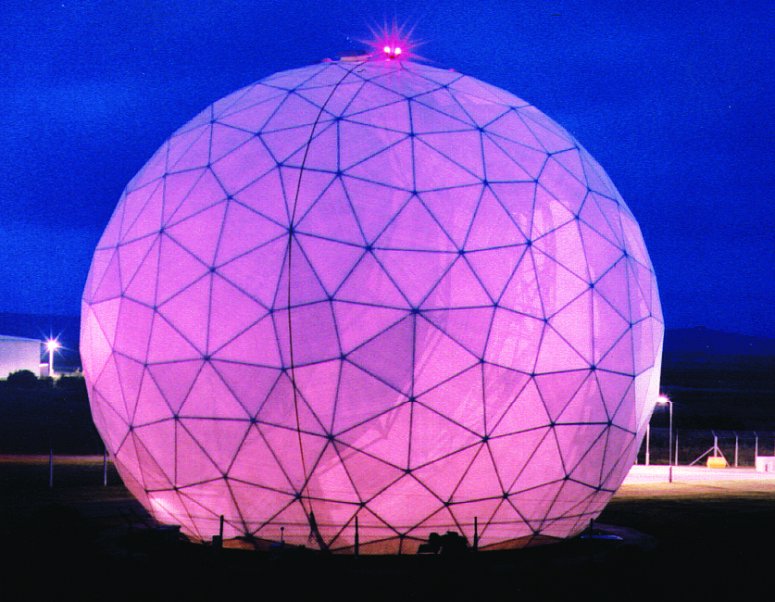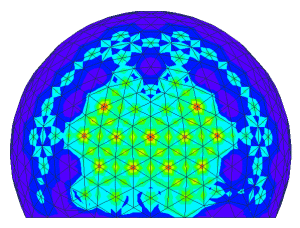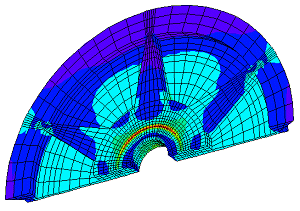Case Study
Composite Radomes
W & J Tod Ltd have been involved with fibre composites since 1948
and have a worldwide reputation for design and manufacture of large sonar acoustic
enclosures for ships and submarines. LUSAS Composite was used to analyse
high technology composite solutions for uses in Marine, Civil, Aerospace, Defence and Mass
Transport applications.

|
One such application
was a 3.7 metre diameter radome to suit a ship borne
antenna. The radome, when mounted on a ship superstructure, is subjected to shock loadings
greater than 15g as per MIL-S-901 and wind speeds in excess of 100 knots. The design
specifications require the radome mass to be kept to a minimum, the deflection from the
above combined loadings to be 50mm or less and all natural frequencies to be greater than
60 Hz.
The proposed construction comprises 29mm Nomex Aeroweb Honeycomb core clad both
sides with 1mm skins of biaxial glass cloth (with 0 & 90 degree fibres) laid in an
epoxy resin matrix, determined as much by the electrical performance requirements as by
the mechanical loadings. |

|
The model was constructed in semi-loof elements and a composite
data set was used to specify the material properties and lay up. The model was fixed at
the bottom edge and symmetric constraints were applied to the vertical plane edge. Several
loadcases were run to evaluate the effects of vertical and inclined plane shock loadings,
the natural frequency, and wind loadings as determined by Tod's own in-house software.
|
Other applications
LUSAS Composite has also been used for several other
composite application projects
at Tod's including:
- architectural domes for mosques
- helicopter radomes
- 2 metre diameter
butterfly valves for the power industry
- lightweight turbine blades
- composite pulley wheels
|

|
Other LUSAS Composite case
studies:
|
|
Software Information
|